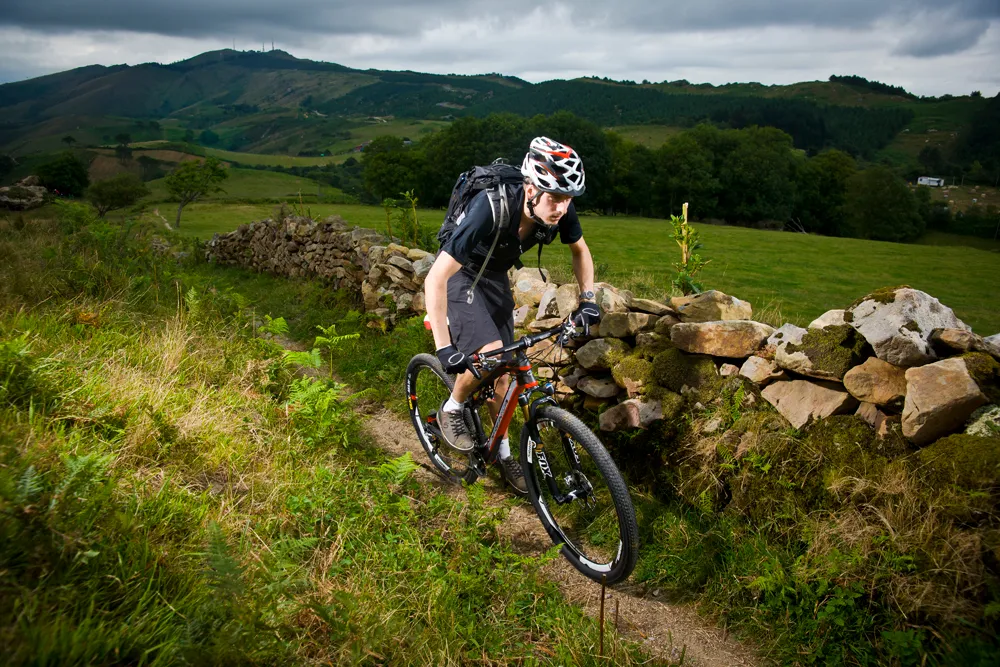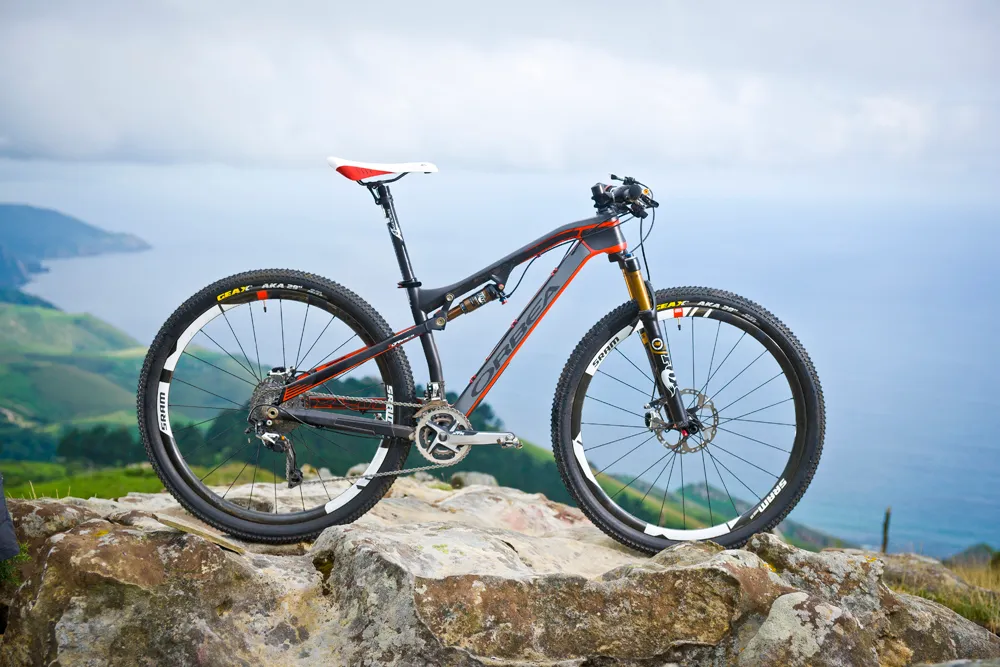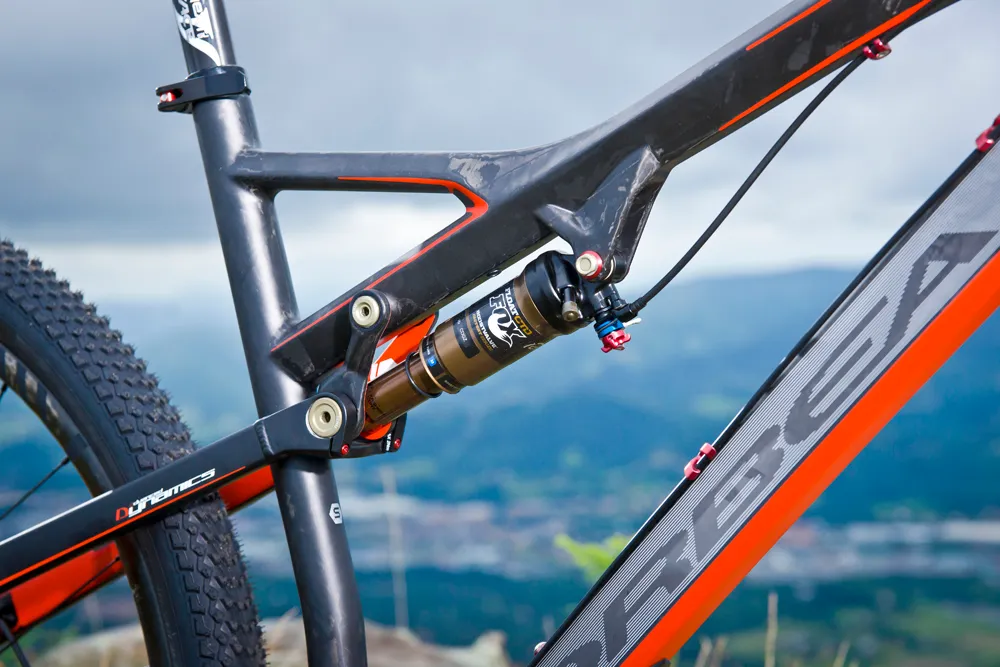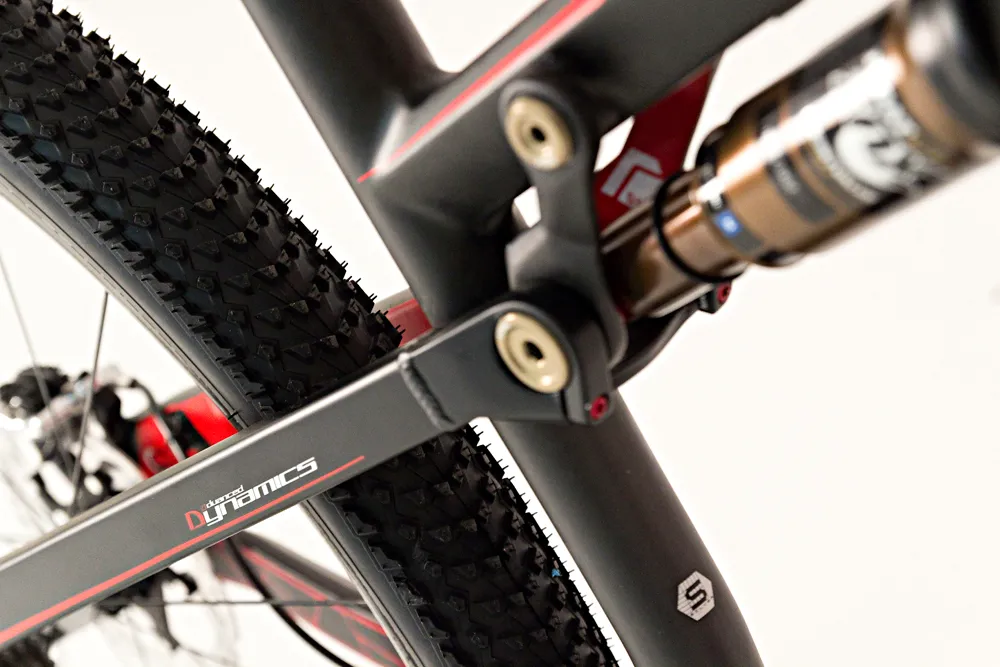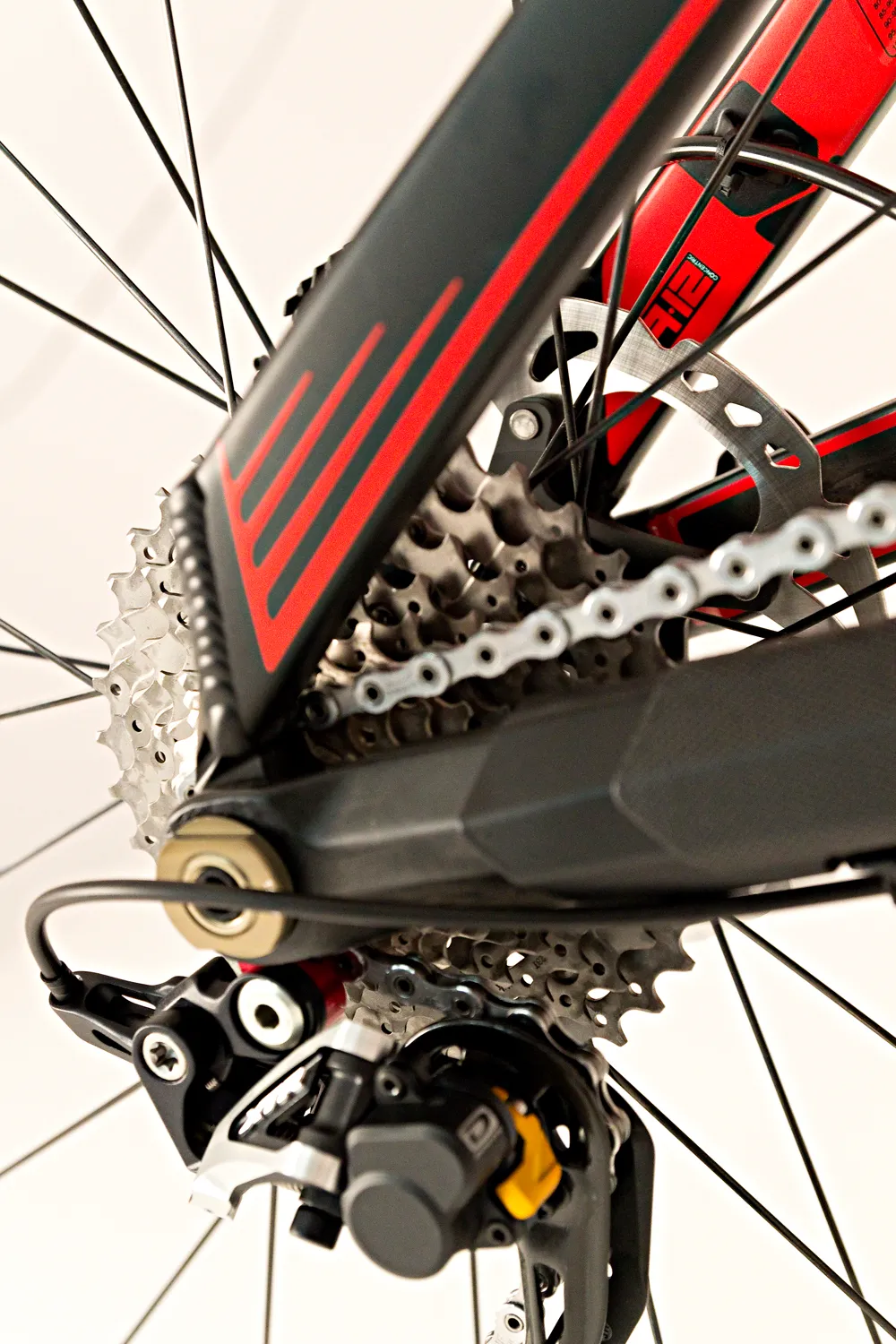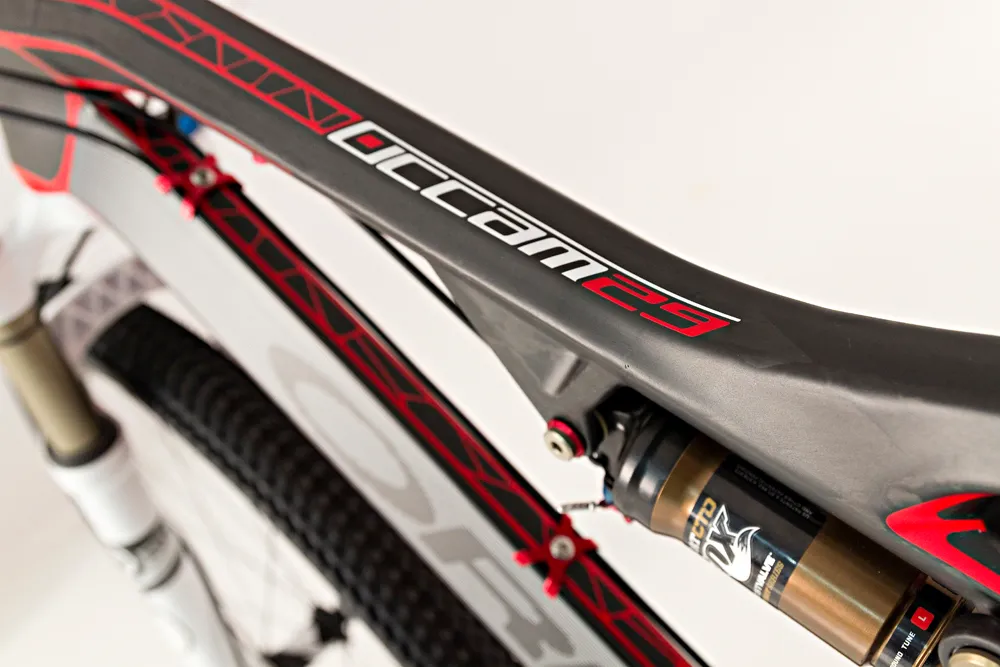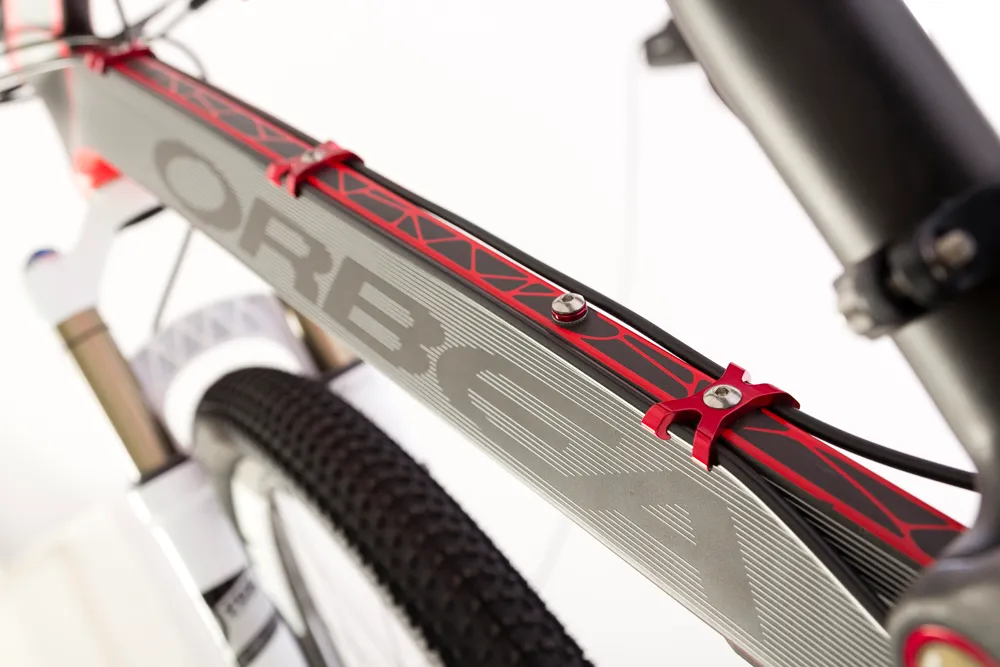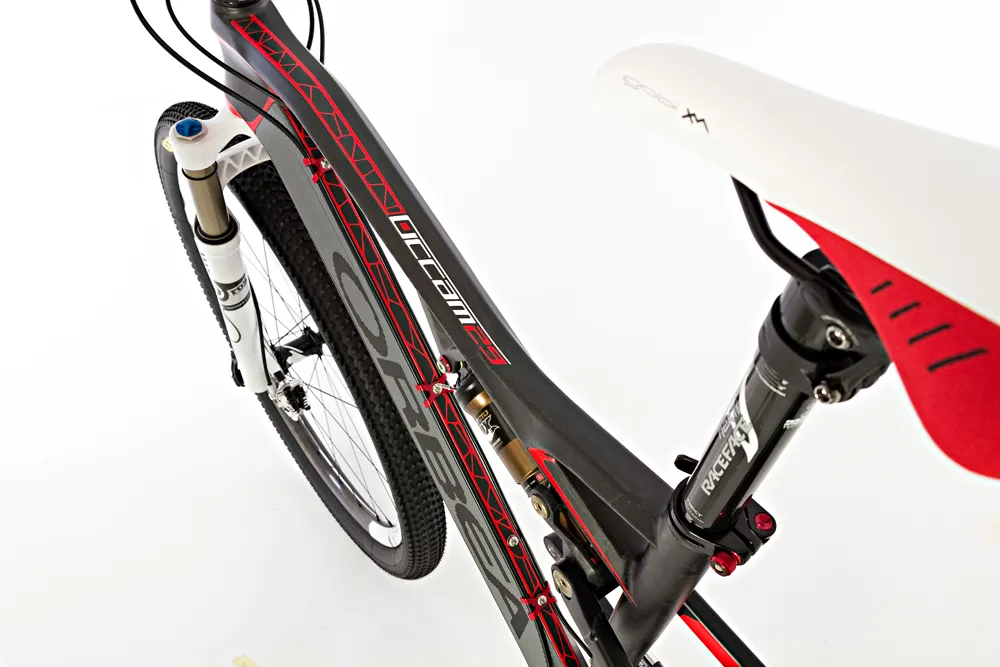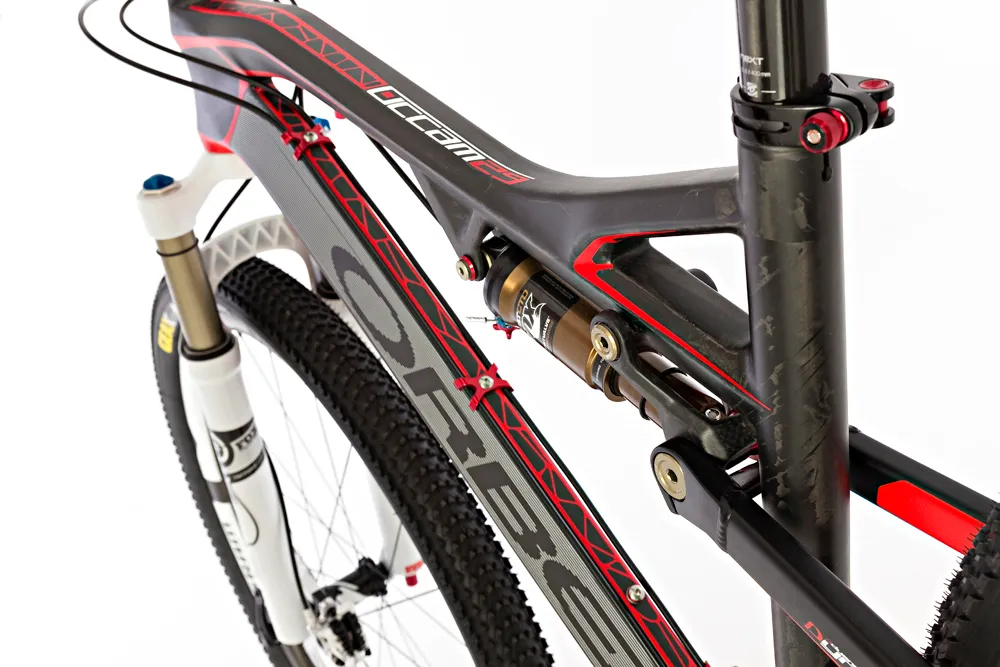Perhaps better known for their road bikes, Orbea are switching focus to the mountain bike stage for 2013.
Over the last 10 years, the Spanish company have restructured with new vision and focus, and massive investment in technology, computer software (Advanced Dynamics) and tools has given them an edge. It's one that's becoming recognised, with their World Cup cross-country team already sitting on a number of good results this season.
The 26in-wheeled Occam was released in 2011 and proved a success as a versatile trail bike. Keen not to rush anything, Orbea have spent a year fully redesigning the bike to accommodate 29in wheels.
It would seem that every last detail has been thought about to make this bike a comfortable, quick mile-eater that handles every bit as well as its 26in-wheeled brother.
Ride & handling: Top-end kit shines through on the trail
Sometimes it's hard to find a location in the UK that's gnarly enough to really put a bike through its paces. Luckily for BikeRadar, Spain's Basque Country is mountainous and green, with sandy, loose trails, huge rocks and ridgelines aplenty. The climbs are killer and the descents rapid. Orbea brought us there to let us thrash the Occam S10, the top-of-the-range Occam 29er for 2013, and we weren't going to hold back.
A long uphill drag got the test started, and with Fox's CTD (Climb/Trail/Descend) suspension system switched to Climb the bike surged forward under power. The Shimano XTR group worked effortlessly smoothly too, with no noise but the Geax AKA tyres biting against the asphalt.
A long top tube length gives a cross-country racer position on the bike, encouraging an efficient stance and allowing us to make best of our lungs as we got closer to the summit.
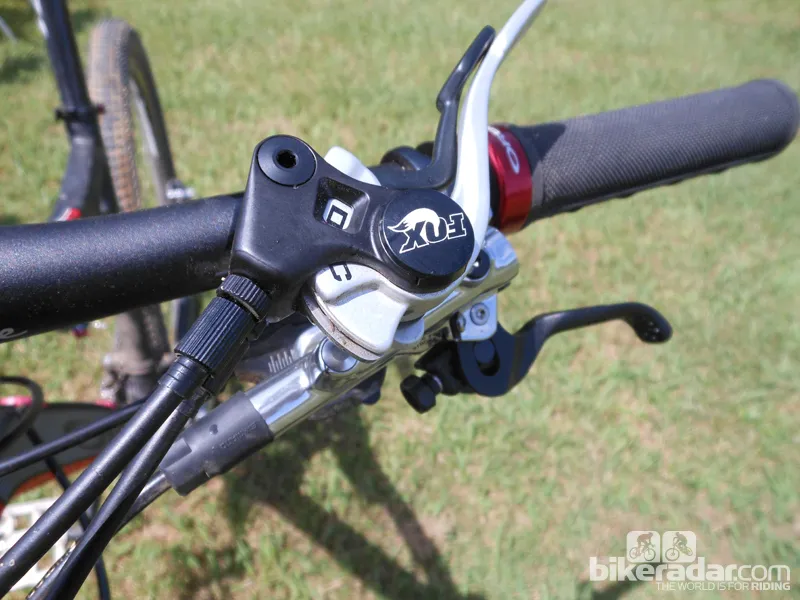
CTD switches suspension presets on the go
Into the woods and the Occam got its first taste of dirt. Flicking the CTD lever to Trail, we immediately felt some relief as the bike began to suck up small rocks and roots.
Soon we were heading downhill and the bike quickly picked up speed, the greater momentum of the larger wheels almost pulling it down. It was only then that we could notice how stiff the Occam frame is, with the carbon SRAM wheels and front and rear 15mm quick-releases playing their part.
With Descend mode engaged and the super-smooth, Kashima-coated suspension working through a fully open valve circuit, the bike had a bullish attitude. Nobody was going to stop it.
Like many other 29ers we've ridden, the Occam doesn't feel top heavy or clumsy. In fact, it's obedient to your every command. To be honest, we were surprised to feel in control at all times, even when cornering at speed.
A 70mm stem and 710mm wide bar aids handling. Before the ride, we flipped the stem from a negative to a positive rise, giving a slightly higher front end as we couldn't get on with the stock setup.
There's been a lot of talk lately about bikes becoming too stiff at the expense of comfort. There's no doubt that the Occam is extremely stiff, but with the custom Fox suspension and a slightly lower tyre pressure, we were comfortable riding all day.
With that in mind, this machine should be a great match for endurance cross-country racers who want to ride with a smile on their face.
Frame & equipment: 29er tweaks aplenty
Orbea wanted the Occam 29er to keep the fun trail-riding vibe of the 26in-wheeled bike, but with added comfort for marathon riding. To that end, the designers called on Fox early in the project to work on a custom suspension platform that would get the best from the bike. The end result was a 100m fork and a 105mm rear can.
The S10 boasts silky, Kashima-coated Fox at the front and rear, with the new CTD (Climb, Trail, Descend) technology enabling you to switch between three pre-tuned suspension setups from the handlebar.
A Shimano XTR groupset keep things shifting smoothly and quickly, with excellent reliability. The matching brakes and Ice Tech rotors have adequate power, modulation and setup features to keep you in control when the trail turns technical, too.
The Spaniards have also added a few quirky features to the Occam S10, to help overcome problem areas where 29ers fall short of their small-wheeled cousins. Two main things the designers have looked at are the bike's handling and stiffness.
On the Occam S10, the front triangle is moulded in one piece using Orbea's OCM carbon fibre. But the designers have opted to use aluminium to create the seatstays, because of the forces this part of the bike is subject to. There's a slight weight penalty, but with it an advantage in stiffness. Full hydroformed aluminium (Hydro) models are also available further down the range.
The old-style bushings have gone from the rear shock linkage, and have been replaced with a ball bearing assembly for reduced friction and a potentially longer life.
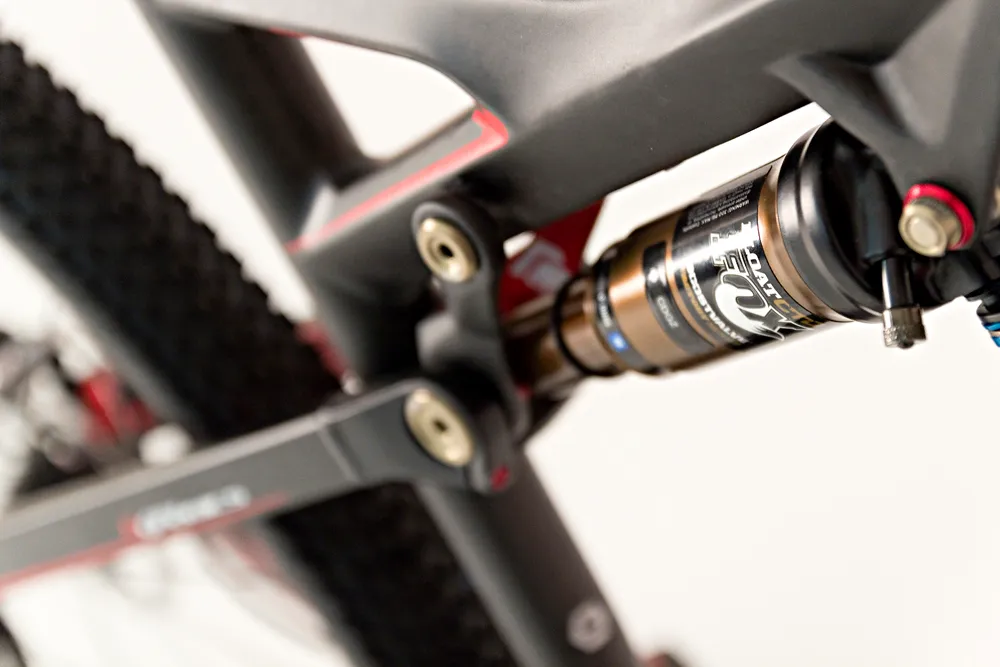
Full bearings in the rear should help with small-bump sensitivity
A longer top tube means a shorter stem can be brought in to liven things up, too, and a 69-degree head angle is just waiting to eat rocks for dinner.
The 15x142mm rear axle runs through a pivot in a similar way to Trek's ABP design. The removable dropouts mean that owners of lower-specced, 9mm compatible Occams can upgrade easily to a bolt-through.
Orbea's Downtube Cable Highway keeps things tidy, with the rear brake and mech lines running neatly down the down tube and held in place by three clips. There's still space to fit a bottle cage, and the front mech cable is routed internally. This limits any cable chatter inside the frame, and Orbea's designers say it gets rid of cable rub completely. It certainly looks organised.
One of the most impressive innovations with the S10 comes at the main pivot. A 28mm OD sleeve runs through, connecting the back end with the front triangle. Two sealed bearings are pressed into this sleeve, and an expander bolt is inserted and tightened against a nut on the other side. Once torqued correctly, the setup is super stiff, smooth and, we hope, hassle free.
As you'd expect, a rubber Occam branded chainstay protector is in place, with a matching piece under the down tube. This should help prevent loose rocks damaging the frame.
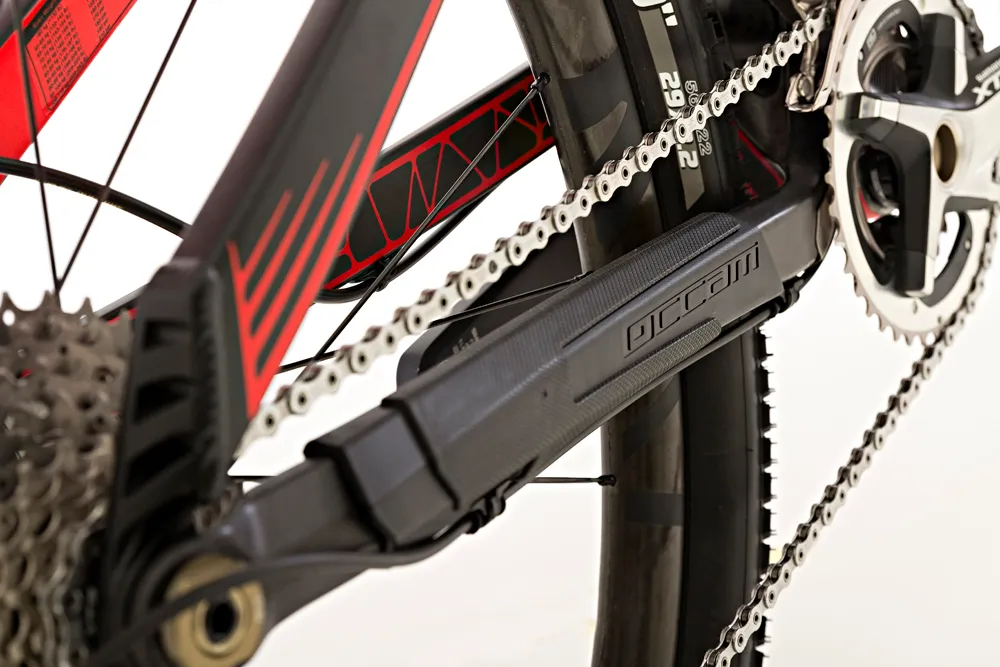
The branded chainstay protector on the Occam S10 29er
MyO is a custom speccing tool that means when you buy an Orbea you have a choice of colours, forks, brakes, seats, stem lengths, and so on. Our test bike had the best of every option, with a reflective price tag.
However, all Orbea bikes over 500 euros come with MyO custom options so that you can change the feel of the bike to suit you. The Spanish company have obviously thought hard about this. The standard Occam will come with 100mm of travel, narrow-ish bars and hard-pack race tyres. There are also Occam MyO options for a 120mm fork, wide bars and a dropper post.
Our top-end test model weighed in at 11.58kg (25.52lb) with XTR clipless pedals.

Expect to see the Occam S10 29er in stores from mid September 2012
